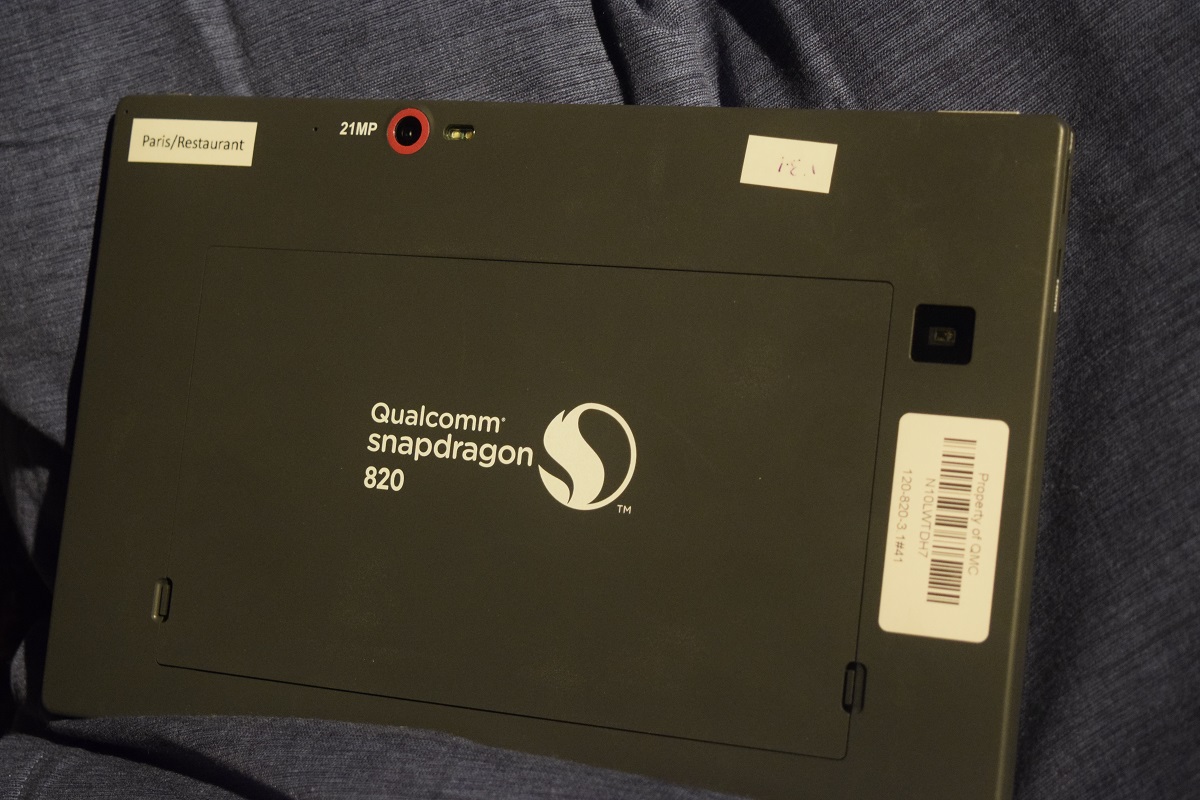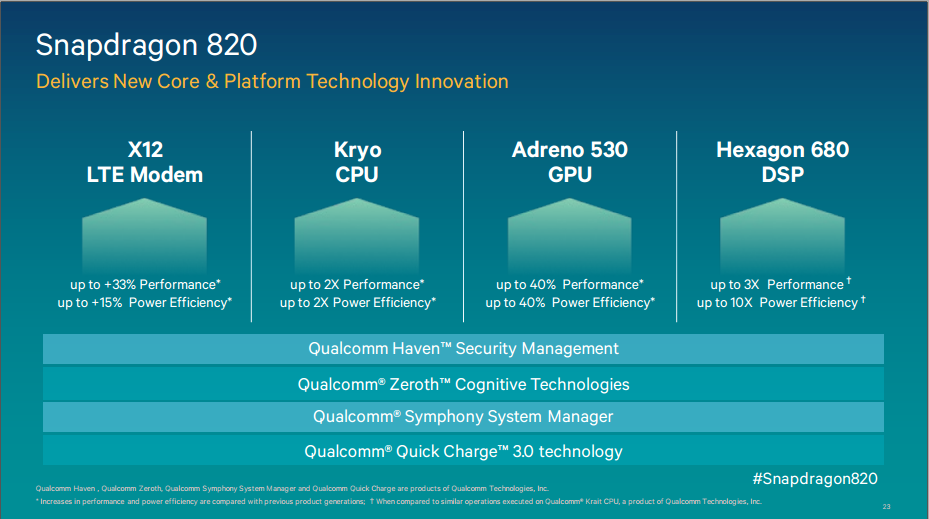Qualcomm Details Snapdragon 820 Smartphone SoC At NYC Event

Qualcomm hosted its Snapdragon 820 event in New York City today to discuss the new features coming in its new SoC. Although some aspects of the hardware haven't been announced yet, the company did give an abundance of information of various new hardware features in the Snapdragon 820.
Meet Kryo
Qualcomm talked some about the hardware inside of the upcoming Snapdragon 820, but most of it remains clouded in mystery. The SoC will contain four CPUs based on Qualcomm's Kryo architecture, which uses the ARMv8 instruction sets. Qualcomm claimed that the CPU will have up to double the performance and be up to twice as energy efficient as the Snapdragon 810, which used ARM's Cortex-A57 CPU architecture. This is due, at least in part, to the use of Samsung's second generation 14nm FinFet LPP.

Although big.LITTLE architectures have been quite popular in recent years, Snapdragon opted to implement only a quad-core design. "People don't really need more than four cores," said Tim McDonough, Qualcomm's VP of Marketing. Another representative from Qualcomm went on to say that it is rare for a workload to use more than four threads, and there wasn't any point to include more than four cores.
The Adreno 530, DPU and VPU
The Snapdragon 820 will also contain Qualcomm's latest Adreno 530 GPU, which replaces the Adreno 430 as Qualcomm's flagship graphics processor. Qualcomm claimed that the new GPU is capable of roughly 40 percent higher performance while simultaneously pushing power consumption down by 40 percent compared to the Adreno 430. The Adreno 530 also brings with it a number of software API improvements, extending support to OpenGL 3.1+ AEP, full OpenCL 2.0, Vulkan and DirectX 11.2.

The DPU and VPU were also upgraded and are now capable of decoding 4K 10-bit video at 60 Hz over HDMI 2.0 or Miracast 2.0. 1080p video can be decoded at up to 240 Hz, too. At the same time, Qualcomm upgraded the hardware decode abilities of the SoC to support HEVC 10-bit and VP9.
With these improved video features, Qualcomm intends to push the Snapdragon 820 for use with VR devices coming in 2016, and the company implemented several software technologies in order to enhance a VR experience -- but that's another story for another article. Unfortunately, Qualcomm didn't have any Snapdragon 820 devices in use with VR hardware on display for us to analyze its potential.
Hexagon 680 DSP And The Spectra Camera ISP
The DSP inside of the SoC was updated to the Snapdragon Hexagon 680 DSP, which is used to power several of Qualcomm's new software technologies. Qualcomm claimed that the DSP is capable of up to three times greater performance and ten times the energy efficiency of its previous generation of DSP.
Get Tom's Hardware's best news and in-depth reviews, straight to your inbox.

Qualcomm's latest evolution of its camera ISP has been renamed Spectra. The Snapdragon 820 contains two 14-bit Spectra ISPs, which are capable of recording 28 MP video at 30 Hz, with up to 1.2 GPix/sec.
Snapdragon X12 LTE Modem
Qualcomm's Snapdragon X12 LTE modem is capable of CAT12 uplink and CAT13 downlink. The modem also features support for the upcoming 802.11ad Wi-Fi standard, which transmits on the 60 GHz band. Over LTE, the modem is capable of up to 600 Mbps of bandwidth and can reach as high as 4.6 Gbps over Wi-Fi. Upload speeds over LTE have also increased significantly, up to 150 Mbps. Qualcomm claimed that power usage on Wi-FI has decreased by up to 45 percent, too.

The last new hardware technology present is Qualcomm's Quick Charge 3.0, which the company said is capable of charging a dead smartphone to full charge in under 35 minutes.

Qualcomm claimed that the effect of all of these power savings across the various aspects of the SoC adds up to a net drop of 30 percent in power consumption.
Qualcomm stated that these devices will start to show up on the market in the first half of 2016.
______________________________________________________________________

Michael Justin Allen Sexton (or MJ) is a Contributing Writer for Tom's Hardware. As a tech enthusiast, MJ enjoys studying and writing about all areas of tech, but specializes in the study of chipsets and microprocessors. In his personal life, MJ spends most of his time gaming, practicing martial arts, studying history, and tinkering with electronics.
Follow Michael Justin Allen Sexton @EmperorSunLao. Follow us on Facebook, Google+, RSS, Twitter and YouTube.